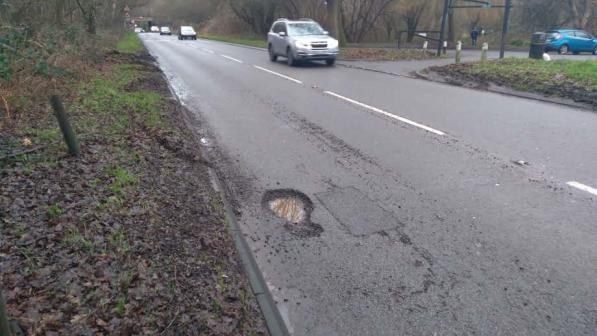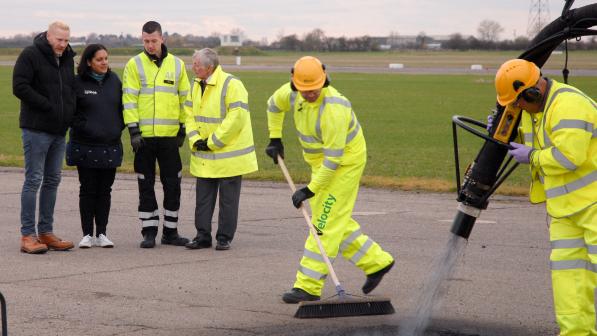Highway maintenance
By Cherry

Cyclists need smooth, defect-free roads
Poor road conditions and lack of maintenance of local roads is a top concern for Britain’s drivers, but people who cycle suffer disproportionately because they are not protected in the same way as motor vehicle occupants.
Cycling on badly maintained surfaces also causes discomfort.
Catering for cycling
Catering for cycling through highway maintenance means:
- Prioritising the types of defect that are particularly hazardous and problematic for people on cycles:
- Defects towards the side of the road, where most people ride – i.e. the two metres nearest to the kerb or any regular car parking space. Defects here can force cyclists to swerve out into the carriageway and, potentially, into the path of motor vehicles.
- Defects at or near junctions, where cyclists are likely to be looking at other traffic rather than the road surface. Their balance may also be affected when cornering.
- Defects on downhill sections of roads where cyclists will probably be travelling faster, making it more likely that a jolt will cause serious injury or damage.
- Defects presenting a sharp upstand on the far side, i.e. where a bike wheel hits a steep or sharp-edged ‘wall’ as it tries to leave the depression.
- Defects running along rather than across the path that cyclists will be taking, i.e. those which are more likely to trap a cyclist’s wheel, like a tramline. Slots in drainage covers aligned with the direction of the road can do this too, so covers should be installed with the slots at right angles to the kerb. - Giving greater priority to minor roads, where most cycling takes place
- Thinking long-term, rather than short-term (reactive maintenance tends to be far less cost-effective than long-term
- Budgeting for whole-life maintenance and investing in specialist equipment, especially for off-road cycling facilities
- Improving cycling conditions whenever planned maintenance takes place (e.g. by installing new infrastructure/layouts)
- Checking lighting, markings and signage during inspection regimes
- Keeping a close eye on utility companies / road work contractors to make sure they don’t inconvenience cyclists unnecessarily during the works and, afterwards, reinstate the surface properly.
Further reading
Please see the briefing below for more detail on the points above. The briefing also covers: duties and liabilities; compensation claims; the national code of practice on well-managed highways; reporting systems; funding and costs.
See separate Cycling UK briefing for vegetation and hedge clippings etc.
For government guidance on maintenance, see:
- Cycle Infrastructure Design, LTN1/20, Chapter 15 (DfT, 2020)
- Active Travel Act Guidance, Chapter 15 (Welsh Government, 2021)
- Cycling by Design, section 3.13 (Transport Scotland, 2021 update)


